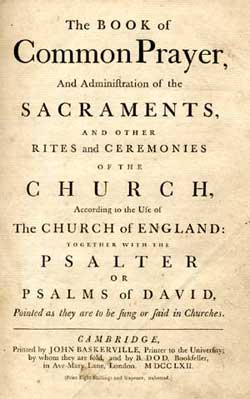 We are celebrating 350 years of the Book of Common Prayer 1662. Many of its principles and rationales are deeply sound. There is much we can learn from it, embodying its principles into our different time and context.
We are celebrating 350 years of the Book of Common Prayer 1662. Many of its principles and rationales are deeply sound. There is much we can learn from it, embodying its principles into our different time and context.
The Tables and Rules for the moveable and immovable Feasts together with the Days of Fasting and Abstinence, through the Whole Year provide information for when the Liturgical Year begins, the dating of Easter, feasts, vigils, and periods of fasting and abstinence.
“EASTER DAY (on which the rest depend)”…
Many of these rules, of course, still apply (the dating of Easter, Advent Sunday,…). Some things are approached differently now.
It encouraged me to see if I could understand and present some of the differences.
How many Sundays in the Year and how are they organised?
The Liturgical Year normally has 52 Sundays. But if Advent Sunday is November 27, Christmas Day falls on a Sunday, and there are 53 Sundays in the Church Year. Furthermore, if Advent Sunday is November 28 (Christmas Day is on Saturday) in a year preceding a Leap Year, then there are also 53 Sundays in the Church Year.
Lent has 6 weeks following Lenten Sundays; Easter Season has 7 weeks (and I will come back to the concluding Sunday of the Easter Season, the Day of Pentecost). That’s 13 weeks Lent+Easter. There are 4 Advent Sundays, and Christmas-Epiphany can have 2 Sundays. That’s a possible maximum of 4+2 = 6 Sundays Advent+Christmas-Epiphany.
13 (Lent/Easter) + 6 (Advent/Christmas-Epiphany) = 19
53 possible maximum – 19 = 34 left over Counting/Ordinal/Ordinary Sundays
When the current system was worked out, they decided to have Ordinary weeks = “counting” weeks (from “Ordinal Numbers”). The 9th week, for example, starts with the 9th Sunday in Ordinary Time;
starting the week with the Sunday in that Ordinary Week. So there are a maximum of 34 Ordinary Weeks possible in a year. Most years (when there are 52 Sundays in the Church Year) only have 33. When the Church Year has 53 Sundays, we will need all of the 34 Ordinary Weeks.
Weeks are counted forward from the Sunday between January 7-13 (which is the First Sunday in Ordinary Time, the Sunday following Epiphany) until Lent. The week before Advent is always the 34th week in Ordinary Time, starting with the Sunday in the 34th Week (the Feast of Christ the King; the Reign of Christ). And so on counting backwards until the Easter Season.
There are two Sundays omitted from the series of Ordinary Time: The week following directly on from the conclusion of the East Season is a week in Ordinary Time, but the Day of Pentecost replaces that week’s Sunday. Trinity Sunday replaces the next week’s Sunday. Another Sunday (and its whole week) is dropped in years when we do not have 53 Sundays/weeks.
Phew!
[If you need an example to help clarify the above:
This Church Year began on November 27 2011 – so this is a church year with 53 Sundays – the maximum possible (it also is a leap year – but that makes no difference to a year beginning November 27). We need all the weeks provided. 7 Ordinary Sundays before Lent; 8th Ordinary Week follows the Easter Season (its Sunday is replaced by the Day of Pentecost), the next Sunday was replaced by Trinity Sunday. The next Sunday was the 10th Sunday in Ordinary Time.
Next Church Year begins December 2 2012, so 52 Sundays, which means dropping one of the Ordinary Weeks. 5 Ordinary Sundays before Lent; number 6 is dropped; #7 is replaced by the Day of Pentecost; #8 by Trinity Sunday; so the next is the 9th Sunday in Ordinary Time.
The collect, of course, in the weeks following the Day of Pentecost and Trinity Sunday, is that of the Ordinary Week – the Day of Pentecost collect and Trinity Sunday collect is only used on the feast day.]
Previous posts in this series
- Book of Common Prayer 350 years
- Book of Common Prayer 350 years (2)
- BCP The Preface
- BCP Concerning the Service of the Church
- BCP Of Ceremonies
- BCP praying Psalms
- BCP reading Holy Scripture
Did I miss any…?



I love this happy phrasing: “EASTER DAY (on which the rest depend)” – in more senses than chronological!
Yes, Mike, I’m so with you on this – that’s why I highlighted it. Blessings.